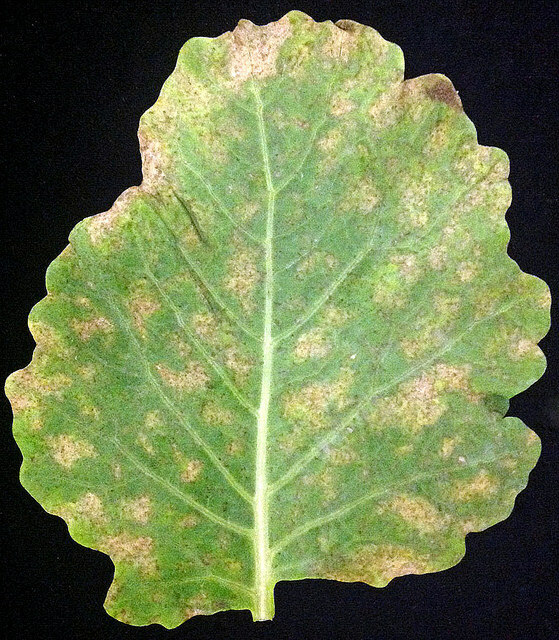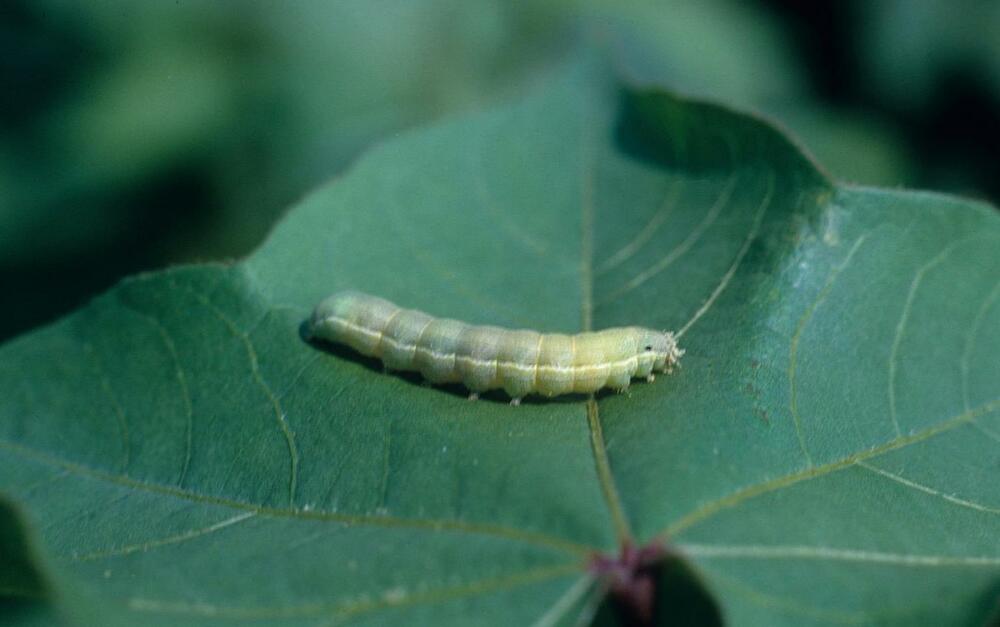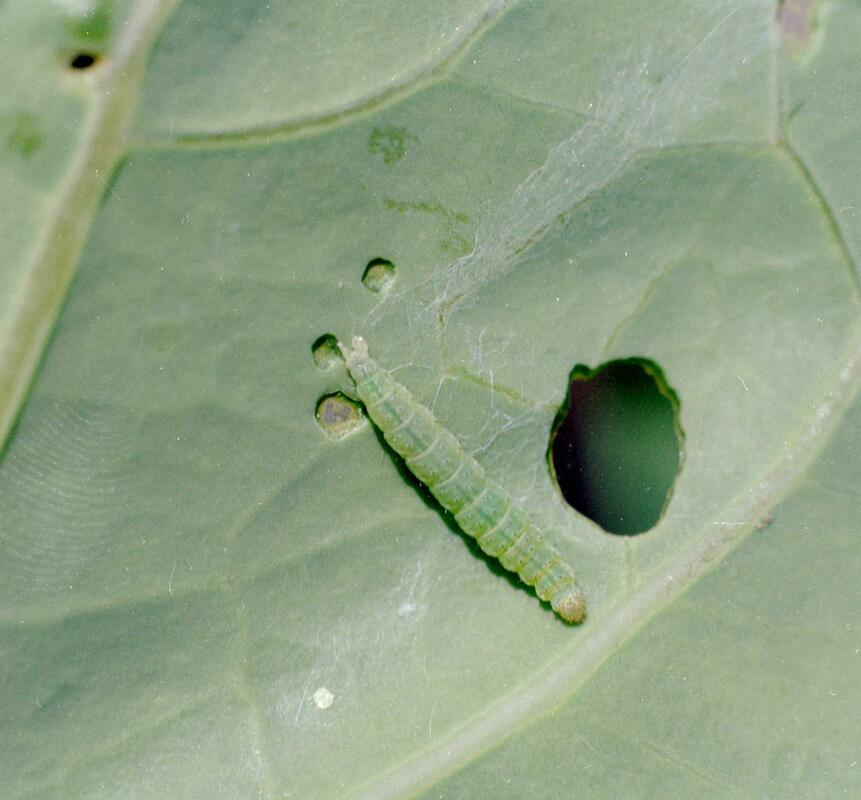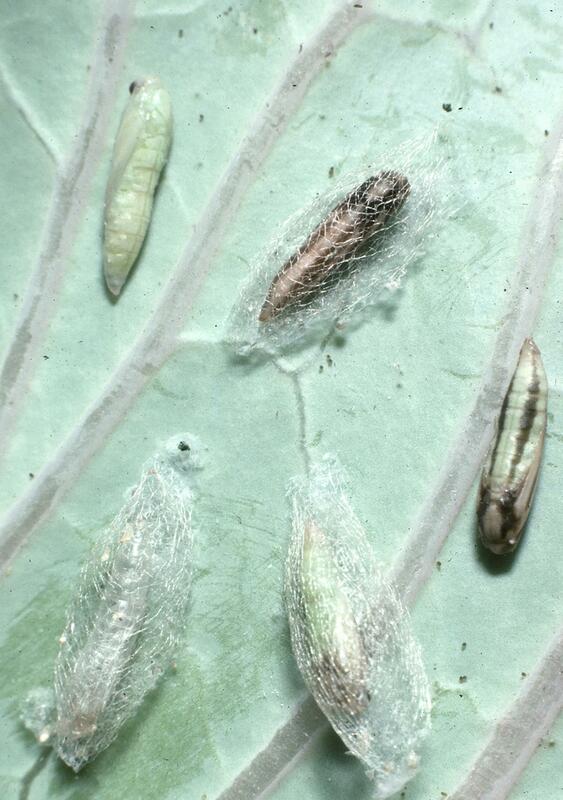Collard greens
Content
Content
Description
Uses
Propagation
References
Common Pests and Diseases
Diseases
Category : Fungal
Alternaria leaf spot Alternaria spp.
Symptoms
Brown to tan concentric rings with yellow edges on leaves; centers of lesions developing gray to brown soft fungal mold; brown to black lesions with a black border on roots
Cause
Fungus
Comments
Disease emergence favors warm, wet conditons
Management
Plant only pathogen-free seed; rotate crops; applications of appropriate fungicides control disease when presentAnthracnose Colletotrichum higginsianum
Symptoms
Small circular or irregularly shaped dry spots which are gray to straw in color on leaves; a high number of spots may cause the leaf to die; lesions may coalesce to form large necrotic patches causing leaves to turn yellow and wilt; lesions may split or crack in dry centers; dry sunken spots on roots which enlarge and turn gray or brown
Cause
Fungus
Comments
Fungus overwinters on leaf debris and on related weeds; disease emergence is favored by moist, warm conditions
Management
Control of disease depends on sanitary practices; treat seeds with hot water prior to planting; rotate crops; plant in an area with good soil drainage; remove all cruciferous weeds which may act as a reservoir for the fungusBlack rot Xanthomonas campestris
Symptoms
Seedlings develop wilted yellow to brown leaves and collapse; yellow, V-shaped lesions on mature leaf margins; dark rings can be found in the cross section of the stem
Cause
Bacterium
Comments
Disease emergence favors warm, wet conditions
Management
Primary control methods based on good sanitation; plant disease-free seed; rotate crops every 2 years or less to non-brassica; avoid sprinkler irrigationCercospora leaf spot (Frogeye leaf spot) Cercospora brassicicola
Symptoms
Angular or circular green to gray spots with brown borders on leaves; plant defoliation may occur in the case of a severe infestation
Cause
Fungus
Comments
Disease emergence favors cool temperatures and wet weather
Management
Plant only certified disease-free seed; avoid overhead irrigation; rotate crops to non-brassica species for 2-3 years; apply appropriate fungicide if disease emergesClubroot Plasmodiophora brassicae
Symptoms
Slow growing, stunted plants; yellowish leaves which wilt during day and rejuvenate in part at night; swollen, distorted roots; extensive gall formation
Cause
Fungus
Comments
Can be difficult to distinguish from nematode damage; fungus can survive in soil for periods in excess of 10 years; can be spread by movement of contaminated soil and irrigation water to uninfected areas
Management
Once the pathogen is present in the soil it can survive for many years, elimination of the pathogen is economically unfeasible; rotating crops generally does not provide effective control; plant only certified seed and avoid field grown transplants unless produced in a fumigated bed; applying lime to the soil can reduce fungus sporulationDowny mildew Peronospora parasitica
Symptoms
Gray to white fluffy mold on the underside of leaves; tan to yellow dry spots on upper surface of leaves; leaves dropping
Cause
Fungus
Comments
Disease emergence favors cool temperatures; disease spreads quickly in wet conditions
Management
Remove all crop debris after harvest; rotate with non-brassicas; application of appropriate fungicides may be required if symptoms of disease are presentWhite leaf spot Pseudocercosporella capsellae
Symptoms
Small, necrotic, brown spots on leaf tips or margins that matures to light gray or white with the original dark spot in center; margins of lesions may be darker; lesions may coalesce to form large chlorotic areas and cause defoliation
Cause
Fungus
Comments
Disease emergence favors cool and wet conditions
Management
No known plant resistance to white leaf spot so control relies on cultural practices such as rotating crops and removing weeds; application of appropriate fungicide may help control the diseaseWirestem (Damping-off) Rhizoctonia solani
Symptoms
Death of seedlings after germination; brown-red or black rot girdling stem; seedling may remain upright but stem is constricted and twisted (wirestem)
Cause
Fungus
Comments
Disease emergence favors slow growing, deeply seeded plants and cool, wet soils
Management
Plant pathogen-free seed or transplants that have been produced in sterilized soil; apply fungicide to seed to kill off any fungi; shallow plant seeds or delay planting until soil warmsPests
Category : Insects
Beet armyworm Spodoptera exigua
Symptoms
Singular, or closely grouped circular to irregularly shaped holes in foliage; heavy feeding by young larvae leads to skeletonized leaves; shallow, dry wounds on fruit; egg clusters of 50-150 eggs may be present on the leaves; egg clusters are covered in a whitish scale which gives the cluster a cottony or fuzzy appearance; young larvae are pale green to yellow in color while older larvae are generally darker green with a dark and light line running along the side of their body and a pink or yellow underside
Cause
Insect
Comments
Insect can go through 3–5 generations a year
Management
Organic methods of controlling the beet armyworm include biological control by natural enemies which parasitize the larvae and the application of Bacillus thuringiensis; there are chemicals available for commercial control but many that are available for the home garden do not provide adequate control of the larvaeCabbage aphid Brevicoryne brassicaea
Symptoms
Large populations can cause stunted growth or even plant death; insects may be visible on the plant leaves and are small, grey-green in color and soft bodied and are covered with a white waxy coating; prefer to feed deep down in cabbage head and may be obscured by the leaves
Cause
Insect
Comments
Cabbage aphids feed only on cruciferous plants but may survive on related weed species
Management
If aphid population is limited to just a few leaves or shoots then the infestation can be pruned out to provide control; check transplants for aphids before planting; use tolerant varieties if available; reflective mulches such as silver colored plastic can deter aphids from feeding on plants; sturdy plants can be sprayed with a strong jet of water to knock aphids from leaves; insecticides are generally only required to treat aphids if the infestation is very high - plants generally tolerate low and medium level infestation; insecticidal soaps or oils such as neem or canola oil are usually the best method of control; always check the labels of the products for specific usage guidelines prior to useCabbage looper Trichoplusia ni
Symptoms
Large or small holes in leaves; damage often extensive; caterpillars are pale green with a white lines running down either side of their body; caterpillars are easily distinguished by the way they arch their body when moving; eggs are laid singly, usually on the lower leaf surface close to the leaf margin, and are white or pale green in color
Cause
Insect
Comments
Insects overwinter as pupae in crop debris in soil; adult insect id a dark colored moth; caterpillars have a wide host range
Management
Looper populations are usually held in check by natural enemies; if they do become problematic larvae can be hand-picked from the plants; an organically acceptable control method is the application of Bacillus thuringiensis which effectively kills younger larvae; chemical sprays may damage populations of natural enemies and should and should be selected carefully
Cutworms
Agrotis spp.
Peridroma saucia
Nephelodes minians
and others
Symptoms
Stems of young transplants or seedlings may be severed at soil line; if infection occurs later, irregular holes are eaten into the surface of fruits; larvae causing the damage are usually active at night and hide during the day in the soil at the base of the plants or in plant debris of toppled plant; larvae are 2.5–5.0 cm (1–2 in) in length; larvae may exhibit a variety of patterns and coloration but will usually curl up into a C-shape when disturbed
Cause
Insects
Comments
Cutworms have a wide host range and attack vegetables including asparagus, bean, cabbage and other crucifers, carrot, celery, corn, lettuce, pea, pepper, potato and tomato
Management
Remove all plant residue from soil after harvest or at least two weeks before planting, this is especially important if the previous crop was another host such as alfalfa, beans or a leguminous cover crop; plastic or foil collars fitted around plant stems to cover the bottom 3 inches above the soil line and extending a couple of inches into the soil can prevent larvae severing plants; hand-pick larvae after dark; spread diatomaceous earth around the base of the plants (this creates a sharp barrier that will cut the insects if they try and crawl over it); apply appropriate insecticides to infested areas of garden or field if not growing organicallyDiamondback moth Plutella xylostella
Symptoms
Young larvae feed between upper and lower leaf surface and may be visible when they emerge from small holes on the underside of the leaf; older larvae leave large, irregularly shaped shotholes on leaf undersides, may leave the upper surface intact; larvae may drop from the plant on silk threads if the leaf is disturbed; larvae are small (1 cm/0.3 in) and tapered at both ends; larvae have to prolegs at the rear end that are arranged in a distinctive V-shape
Cause
Insect
Comments
Larvae take between 10 and 14 days to mature and spin a loose, gauze-like cocoon on leaves or stems to pupate
Management
Larvae can be controlled organically by applications of Bacillus thurengiensis or Entrust; application of appropriate chemical insecticide is only necessary if larvae are damaging the growing tips of the plantsFlea beetles Phylotreta spp.
Symptoms
Small holes or pits in leaves that give the foliage a characteristic “shothole” appearance; young plants and seedlings are particularly susceptible; plant growth may be reduced; if damage is severe the plant may be killed; the pest responsible for the damage is a small (1.5–3.0 mm) dark colored beetle which jumps when disturbed; the beetles are often shiny in appearance
Cause
Insects
Comments
Younger plants are more susceptible to flea beetle damage than older ones; older plants can tolerate infestation; flea beetles may overwinter on nearby weed species, in plant debris or in the soil; insects may go through a second or third generation in one year
Management
In areas where flea beetles are a problem, floating row covers may have to be used prior to the emergence of the beetles to provide a physical barrier to protect young plants; plant seeds early to allow establishment before the beetles become a problem - mature plants are less susceptible to damage; trap crops may provide a measure of control - cruciferous plants are best; application of a thick layer of mulch may help prevent beetles reaching surface; application on diamotecoeus earth or oils such as neem oil are effective control methods for organic growers; application of insecticides containing carbaryl, spinosad, bifenthrin and permethrin can provide adequate control of beetles for up to a week but will need reappliedLarge cabbage white (Cabbageworm) Pieres rapae
Symptoms
Large ragged holes in leaves or bored into head; green-brown frass (insect feces) on leaves; caterpillar is green in color and hairy, with a velvet-like appearance; may have faint yellow to orange stripes down back; slow-moving compared with other caterpillars
Cause
Insect
Comments
Larvae can be distinguished from other caterpillars by their sluggish movement; in large numbers larvae can cause extensive damage very quickly
Management
Hand-pick caterpillars from plants and destroy; scrape eggs from leaves prior to hatching; apply appropriate insecticide if infestation is very heavy
Thrips (Western flower thrips, Onion thrips, etc.)
Frankliniella occidentalis
Thrips tabaci
Symptoms
If population is high leaves may be distorted; leaves are covered in coarse stippling and may appear silvery; leaves speckled with black feces; insect is small (1.5 mm) and slender and best viewed using a hand lens; adult thrips are pale yellow to light brown and the nymphs are smaller and lighter in color
Cause
Insect
Comments
Transmit viruses such as Tomato spotted wilt virus; once acquired, the insect retains the ability to transmit the virus for the remainder of its life
Management
Avoid planting next to onions, garlic or cereals where very large numbers of thrips can build up; use reflective mulches early in growing season to deter thrips; apply appropriate insecticide if thrips become problematicCategory : Nematodes
Root knot nematode Meloidogyne spp.
Symptoms
Galls on roots which can be up to 3.3 cm (1 in) in diameter but are usually smaller; reduction in plant vigor; yellowing plants which wilt in hot weather
Cause
Nematode
Comments
Galls can appear as quickly as a month prior to planting; nematodes prefer sandy soils and damage in areas of field or garden with this type of soil is most likely




















